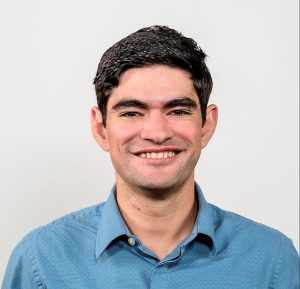
Ricardo Bustos Ramirez, Ph.D., was selected recently for the student spotlight in LIA Today. The feature in the November/December 2021 issue includes an interview with Ramirez. Click here to view the original article.
(Reprinted with permission.)
When you were you first introduced to photonics/electro-optics?
“I was introduced by a friend from college who was doing a MSc in Optics. We were both trying to figure out what to do for our PhDs and he recommended Photonics/Electro-Optics as a career.”
What or who inspired you to choose your line of study?
“Several things; after my friend introduced me to optics I started doing my own research about it and I found out that photonics is now everywhere in science and even in technology we use every day. It is in the telescopes, and most of the technology that we use to study the universe, but it is also in the things that we all use, for example, it provides the infrastructure for high-speed internet.”
Describe your favorite course you have taken so far.
“My favorite course so far was Ultrafast Optics. It was taught by Prof. Peter Delfyett. I liked it a lot because it had a good mix of nonlinear optics and systems engineering, which I both like. It also helps that ultrafast optics is the main topic of my PhD.”
Are you researching anything at the moment? Can you tell us about it?
“During my PhD I was working on linking two different types of chip-scale frequency combs, namely microcombs and semiconductor mode-locked laser. In the future this could have applications in the generation of ultra-low phase noise signals and in chip-scale optical atomic clocks.
Right now I work at a company that designs and manufactures optical networking equipment based on photonic integrated circuits.”
What would you like to do in the future with your studies?
“I would like to work in industry in an R&D environment for a company that does research in telecommunications, microwave photonics, or ultrafast photonics. Another place I would like to work is at a National Lab.”